The Mediastinum corresponds to a tissue space in the chest cavity, in which all chest organs with the exception of the lungs are accommodated. The organs are embedded in connective tissue within the mediastinum, which maintains its shape and takes on both supporting and protective functions. The mediastinum often receives clinical relevance from mediastinal tumors, which can shift the middrum including the organs into one half of the thorax.
What is the mediastinum?
Different systems with vital functions are located in the human chest cavity. In addition to the heart, for example, the immunologically relevant thymus and the windpipe are embedded in the chest cavity. The medical professional understands the mediastinum to be a tissue space in the chest cavity that houses all chest organs with the exception of the lungs.
Literally translated, mediastinum means something like middle area. The structure lies median within the chest cavity and is bounded on the ventral side by the sternum. The spine forms the dorsal border. The mediastinum is laterally bordered by the pleurae and the upper thoracic aperture is located cranially. Caudal to the mediastinum is the diaphragm, which, like the lungs, does not belong to the middle space. From an anatomical point of view, the chest cavity is divided into two different sections: a lower and an upper tissue space. In addition to veins, arteries and nerves, the mediastinum is primarily located in the lymphatic system. Organs like the heart are also part of the structure.
Anatomy & structure
Loose connective tissue lines the mediastinum and embeds all of the chest organs except the lungs. The upper mediastinum houses the thymus as well as vessels near the heart such as the aortic arch or its branches, the pulmonary trunk or the superior vena cava. The trachea, esophagus, mediastinal and tracheobronchally lymph nodes are also located in the upper mediastinum.
The nerve structures of the upper area correspond to the phrenic nerve, the vagus nerve and the recurrent laryngeal nerve. As the so-called milk breast duct, the thoracic duct is part of the lymphatic system. The so-called 'aortopulmonary window' lies between the aortic arch and the left pulmonary artery: a space that plays a role in radiology. The lower middeal space adjoins the upper mediastinum. This lower space is further subdivided into a front section between the sternum and pericardium, a middle section that encompasses the heart and a rear section between the heart and the thoracic spine.
The posterior part is home to the esophagus, the aorta and the inferior vena cava as well as the azygos vein, the hemiazygos vein and the nerve structures of the vagus nerve. In the upper layer of the mediastinum lie the origins of various muscles of the neck. The organs are in the deeper layers.
Function & tasks
Most of the organs of the chest are housed in the mediastinum. The main task of the structure is the protective function. The entire mediastinum is equipped with connective tissue, which forms an ideal protective space for the vital structures of the chest. Connective tissue mainly takes on supporting tasks in the human body and consists of comparatively few cells. Because of the large intercellular mass of connective tissue structures, the connective tissue can maintain the shape of organs.
In the mediastinum, the connective tissue lining protects the organs from damage. For this purpose, there are different types of fibers in the intercellular substance. Fibers made of fibrillar proteins such as collagen form a tight meshwork that supports the organs. Between these fibers there are strongly swelling proteoglycans that resist tensile forces and at the same time have a compression-damping effect. In interaction, the fiber meshwork and the proteoglycan buffer of the mediastinal connective tissue take on supporting and protective tasks for the chest organs. In addition, the mediastinal connective tissue serves as a water reservoir and also takes on important functions in defense against disease.
While the structures of the chest cavity are already relatively shock-protected by the ribs, it is the connective tissue protection of the mediastinum that maintains the organ shape and location. This means that the organs of the chest cavity are essentially protected and secured several times. The ribs correspond to a skeletal protection, while the mediastinum takes over the fine tissue protection. The multiple protection of the chest organs refers to the vital necessity that organs like the heart have in the human body.
You can find your medication here
➔ Medication for chest painDiseases
In the clinic, the doctor is confronted with various diseases of the mediastinum every day. The most common of these are mediastinal tumors such as thymomas and lymphomas. Masses in the thorax that displace the mediastinum are somewhat rarer. A mediastinal displacement does not necessarily have to be associated with a mass, but can also be an indication of pneumothorax. The doctor will perform a mediastinoscopy to image the mediastinum.
Mediastinal tumors cause typical symptoms by locally displacing neighboring structures. Common signs of a tumor in the mediastinum are compression symptoms of the superior vena cava, which are accompanied by hoarseness. In this scenario, the tumor displaces the superior vena cava and the recurrent laryngeal nerve. As a result of the displacement, the two structures are now jammed, so that circulatory disorders and nerve conduction disorders arise. Tumors of the mediastinum can also cause the symptom complex Horner's syndrome and thus paralysis of the smooth muscles of the eye.
Due to the tissue displacement caused by the tumor, an elevated diaphragm can also occur, which is associated with increasing shortness of breath. This scenario is mainly caused by a tumor-related compression of the trachea. Nonspecific accompanying symptoms of a tissue-displacing mass within the mediastinum are cough and the general symptoms night sweats and fever. In the context of tumor diseases of the structure of the mediastinal space, a mediastinal displacement often occurs, which corresponds to a displacement of the mediastinum that can be shown radiologically. This shift shifts the mediastinal space together with its organs into one of the thorax halves.

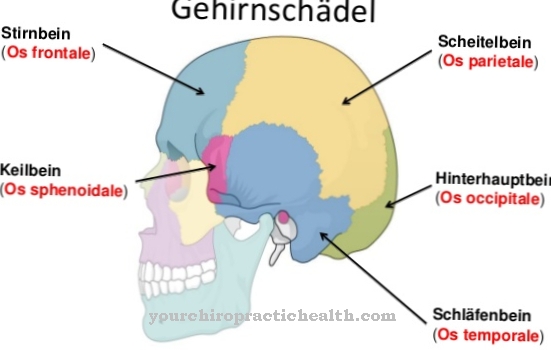
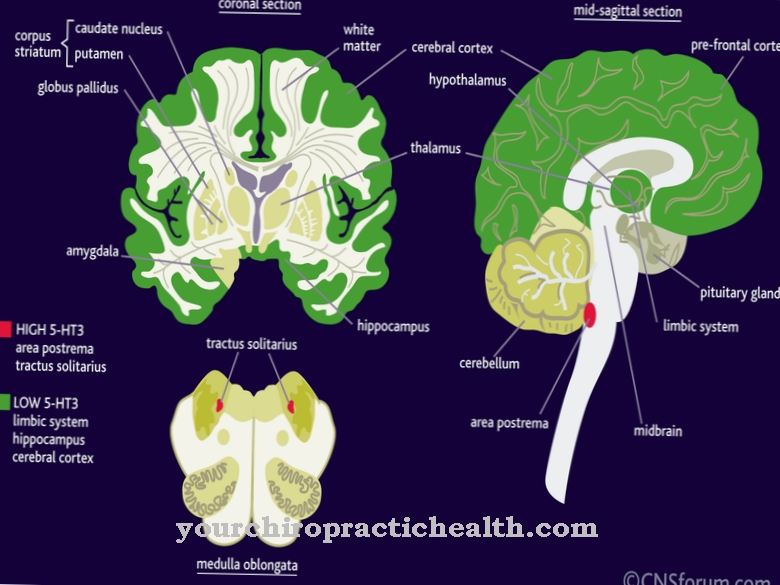

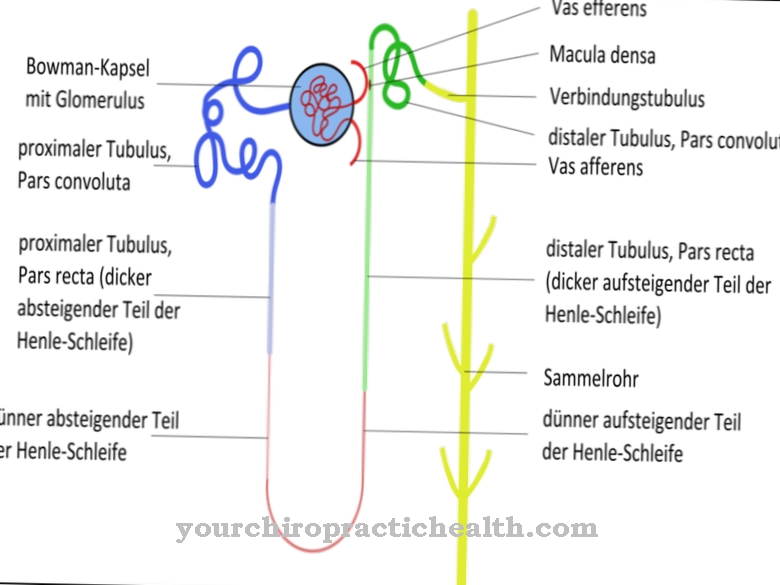
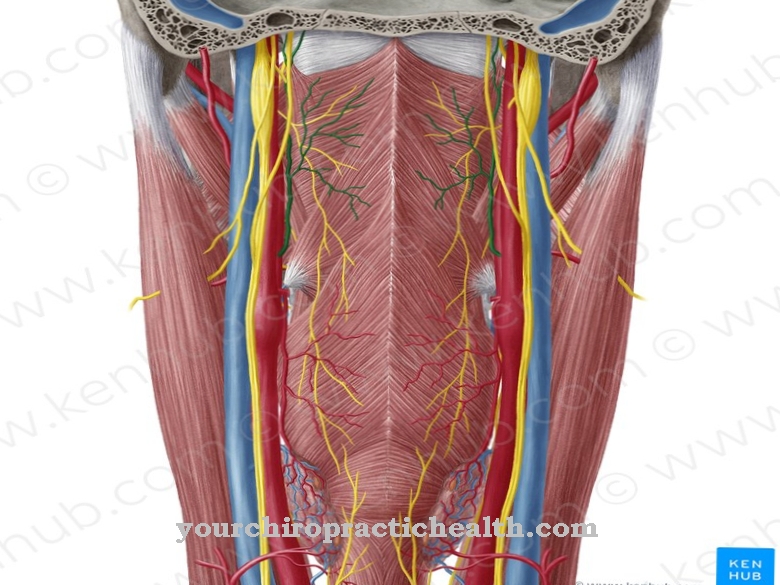
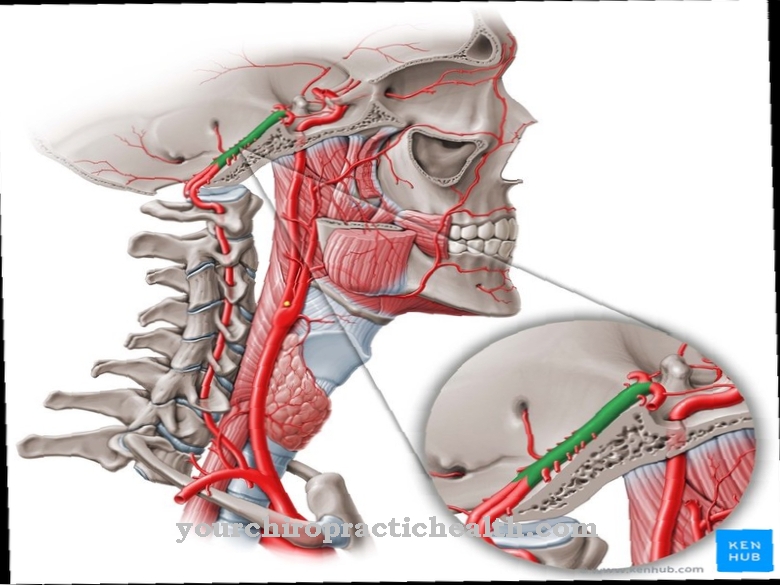






.jpg)

.jpg)
.jpg)











.jpg)